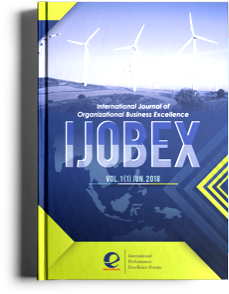Abstract
The purpose of this study is to explain how intercultural families interact in maintaining harmony within the family, especially the interaction between Indonesian Moms and Japanese Fathers. The method used in this study is qualitative with primary sources through in-depth interviews.Data analysis is done by reducing the data that has been obtained from the interviews, compared with the concept of intercultural communication and acculturation. The data is validated with secondary data that is the result of previous research. The results obtained show that the couple of Indonesian wives and Japanese husbands keep each other harmony interaction by choosing the appropriate language situation required. They use everyday language are: English, Japanese and Indonesian. The dominant language is the language in where they live. This result shows that they are showing respect for each other. The use of the chosen language as an effort to adapt to the culture in where they live includes also invited their children to always appreciate the cultureof their fathers and mothers equally in influence. So the three behavioral barriers do not occur as a priori, prejudice and authority that one against the other. There is a trust between them. Acculturation in this family is seen as a cultural enrichment,cultural differences do not create barriers to family interaction and with the environment. Father and Mother bequeathed culture to their children in a balanced and without dominance, there is balance in power.
References
beritasatu.com. (2013). PemerintahOptimistisBelanjaKonstru ksi Rp400 Triliun. Retrieved from http://id.beritasatu.com: http://id.beritasatu.com/home/pemerin tah-optimistis-belanja-konstruksi -rp400-triliun/69933
Bogdan, R., & Taylor, S. (1992). Pengantar Metode Kualitatif Introducti on to Qualitative Methods]. Surabaya: Usaha Nasional.
Ibrahim, J. (2016). Bank Syariah Dalam Akulturasi dan Kearifan Lokal Lembaga Keuangan di Bali [Bank Syariah Acculturation and Local Wisdom of Financial Institutions in Bali]. Seminar Nasional II FISIP Universitas Andalas. Padang: UniversitasAndalas.
idn.wakuwakumag.com (2017).MenguakFakta di Balik Pernikahan Campuran di Jepang [Revealing Facts behind Mixed Marriage in Japan]. Retrieved from http://idn.wakuwakumag.com/marriage
Ladyanna, S. (2013). Ruang Publik dan Perempuan di Korea Selatan [Public Spaces and Women in South Korea]. MUWAZAH, 5(1), 4253.
Liliweri, A. (2003). Dasar-dasar Komunikasi Antar budaya [The Basics of Intercultural Communication]. Yogyakarta: PustakaPelajar.
Luthan, Y. (2017). The Problems of Mix Married. (U. Yunus, Interviewer)
Poerwandari, K. (2007). Pendekatan kualitatif dalam penelitian psikologi [Qualitative approach in psychological research]. Jakarta: Universitas Indonesia.
Renalds, T. G. (2011). Communication in Intercultural Marriages: Managing Cultural Differences and Conflict for Marital Satisfaction. Virginia: Liberty University, Lynchburg.
Samovar, L. A., & Porter, R. E. (1994). Intercultural Communication: A Reader. New York: Mc Grawhill.
Tili, T. R., & Barker, G. G. (2015). Communication in Intercultural Marriages: Managing Cultural Differences and Conflicts. Southern Communication Journal, 80(3), 189210.

This work is licensed under a Creative Commons Attribution-NonCommercial-ShareAlike 4.0 International License.
Copyright (c) 2018 BINUS Higher Education

